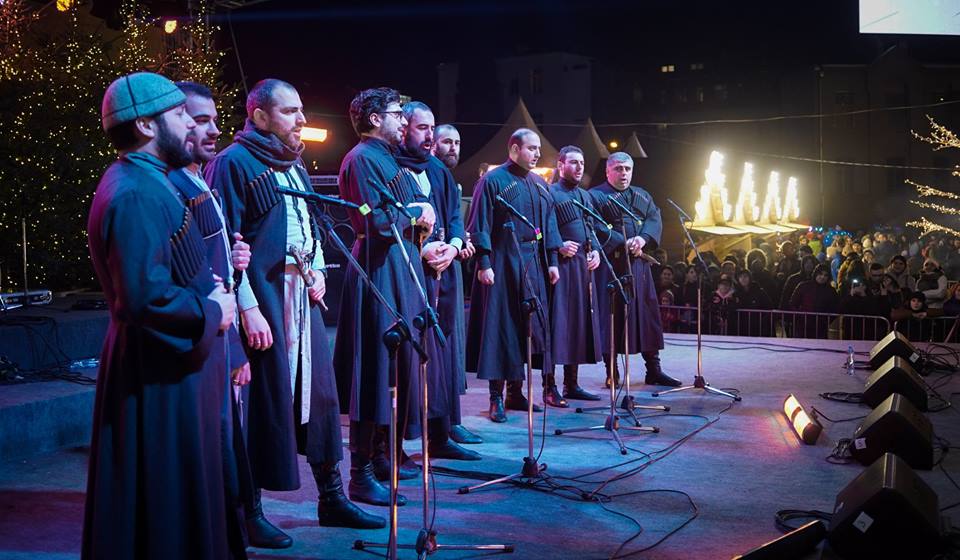Fifteen men of various ages are seated around a small room in the courtyard of the neigboring church. Golden paintings of orthodox icons decorate the walls and the glass cabinets are filled with wine. Soon, the chatter is replaced with the rich tones of the voices of the Didgori Choir. The resonant harmonies and layered textures rise to fill every corner of the room. This is the soundtrack of Georgian culture; welcome to polyphonic singing.
Polyphonic singing is a living ancient tradition in Georgia. Dating as far back as the 4th century AD, the a-capella singing method uses at least three vocal ranges to create multi-layered harmonies often unusual to a western ear.
Its inseparable connection with Georgian culture and history has earned it the title of a UNESCO Intangible Cultural Heritage of Humanity. Indeed, Georgians can often be heard singing at celebrations, supras, church or even at restaurant tables.
Before bursting into each moving song, the members of Didgori explain the background and region. Every region in Georgia has its own style of polyphony. They perform pieces from across Georgia: Khasanbegrua from Guria with its distinctive yodalling style, Lile from Svaneti, and Mravalzhamier from Kakheti, before introducing a song from Abkhazia, Georgia’s occupied region.

“Abkhazian culture is rich with folk poetry and songs,” explains Lasha Fruidze, a Didgori singer. “Their songs belong to the same family as our folklore.”
Abkhazian folk songs combine vocal melody and chanting, as well as polyphonic style. Usually, a tenor begins the song before others join in, improvising around the original melody in a lower register.
Performing Abkhazian songs has a powerful effect. “It’s a very big pain for Georgian people, especially for the people who were thrown out of their homes. People often cry when we perform,” says Lasha. “Abkhazian songs are an invisible connection between Georgia and Abkhazia.”
In occupied Abkhazia, it is thought that the culture of folk music is being neglected. “I’ve been trying to find young Abkhaz who can sing old, traditional songs, but unfortunately my attempts have never been successful,” says Givi Abesadze, manager and singer in the Didgori Choir.
Preservation is an important part of Didgori’s work. The choir increases its repertoire of songs by using old wax recordings stored in places such as the central archive, conservatoire, and museums. “Luckily, many of them have been digitalized and we have the opportunity to listen to and learn many new songs,” says Abesadze. “I think Georgia is lucky to have so many old recordings. Dating back to 1901, these recordings are our main teachers today.”
Polyphonic singing and the Didgori Choir are not just appreciated within Georgia. Having already performed in many European countries, the group is preparing for concerts in Austria and Germany later this month as well as a trip to Canada. “As Canadian singers told us, we’ll be the first Georgian singers to visit Canada since 1975,” said Givi with a smile. They also plan various performances on home soil in Georgia.
The work of choirs such as Didgori to keep Georgian tradition and song alive and spread awareness of its diversity and existence plays an integral role in preserving Georgian culture. This year, Didgori celebrates its 15th anniversary. With at least three rehearsals a week, the choir’s slogan ‘singing is a lifestyle’ is apt. “We cannot live without singing; singing takes up a big part of our life,” says Abesadze. “Singing, the wine, and the food in Georgia - it’s something unforgettable.”
By Amy Jones
